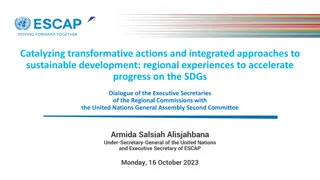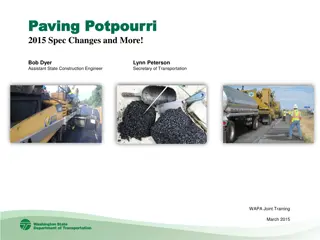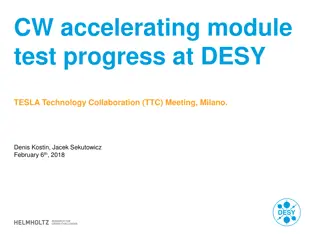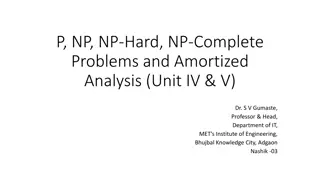
Uncovering the Complexities of Drug Epidemics and Policy Initiatives
Explore the historical progression of drug use from the 1970s to present, addressing the shift from illicit narcotics to prescription drugs. Delve into research questions surrounding drug-related deaths, opioid abuse, economic impacts, and legislative responses. Methodological approaches and governmental initiatives are examined to understand the multifaceted nature of drug problems.
Download Presentation

Please find below an Image/Link to download the presentation.
The content on the website is provided AS IS for your information and personal use only. It may not be sold, licensed, or shared on other websites without obtaining consent from the author. If you encounter any issues during the download, it is possible that the publisher has removed the file from their server.
You are allowed to download the files provided on this website for personal or commercial use, subject to the condition that they are used lawfully. All files are the property of their respective owners.
The content on the website is provided AS IS for your information and personal use only. It may not be sold, licensed, or shared on other websites without obtaining consent from the author.
E N D
Presentation Transcript
ACCELERATING PROBLEMS FROM WITHIN By: Brittaney Dyer University of North Georgia
OVERVIEW Historical Changes: 1970s National Epidemic vs. 2000s National Epidemic Progression of Drug Use: Transnational Drug Trafficking to Domestic Prescription Drug Abuse Federal Legislation: Pros vs. Cons
RESEARCH QUESTIONS As drug-related deaths increase each year, is it factually valid to blame illicit narcotics entering the United States? Are more individuals abusing prescription opioid pain-relieving drugs over illicit narcotics? What impact is prescription opioids having on the United States economy? Have legislative actions sought to address this national epidemic further?
METHODOLOGICAL APPROACH Qualitative Research Design: Progression of drug use Prevalent trends Case Study Approach: Detailed information yielding strong understanding
HOW DID WE GET HERE? Early Settlers: Little to no governmental restrictions Favored psychoactive narcotics tobacco, nicotine, and cocaine 1970s - First Declaration of National Drug Epidemic: President Nixon War on Drugs Campaign Launched Transnational Drug Trafficking Organizations Legislative efforts targeting illicit drug smuggling U.S./Mexico Border
HOW DID WE GET HERE? CONT. 1980s Intensified Approach to War on Drugs: President Reagan Just Say No Campaign Launched First effort to target sea smuggling routes Southern Florida and the Caribbean Legislative actions treated everyone equally Today Persistent Challenges Exist: 2016 Almost 64,000 Americans died as a result of a drug overdose: 42,000 ~ Opioid overdose deaths
CURRENT PUBLIC POLICY INITIATIVES Initiative to Stop Opioid Abuse and Reduce Drug Supply and Demand: Introduced in 2018 - President Donald J. Trump Single largest legislative package in United States history 3 Dominant Parts: Reduce demand and over-prescription practices Decrease illicit drug supply from international and domestic drug chains Offer evidence-based treatment and recovery support services
CURRENT PUBLIC POLICY INITIATIVES CONT. Proactive results have occurred: 2,300 lbs of fentanyl removed from American streets Fewer young adults seeking outpatient addiction treatment Unanswered questions: What will the long-term results be? Will this initiative be successful at tackling the deadliest drug overdose crisis in America?
FINDINGS Illicit Drug Use: Persistent problem throughout U.S. history Evolved from transnational to domestic, illicit to licit Serious Global Health Problems Emerged: Prescription opioid pain reliever abuse Health, social, and economic wellbeing within all American societies negatively impacted Legislative efforts have failed to reduce drug-related deaths
FINDINGS CONT. Governmental Concerns Combatting Illicit Drug Activity: Advanced Interdiction Practices target transportation and illegal drug grows Ineffective Results: 1. Alternate trafficking routes created 2. Enhanced concealment practices
FINDINGS CONT. Enhanced Crime Control and National Drug Enforcement Protocols: Tough Crime Control Policies: Can create long-term damage to the social welfare of a nation Increase prison overcrowding Increase costs to U.S. economy Unsuccessful Results: 1. More individuals placed in prison for federal drug offenses 2. Deplorable prison conditions
FINDINGS CONT. Medical Field: Withstood abuse for extensive period of time Misleading data from pharmaceutical manufacturers in 1970s: Marketed with little to no addicted properties
WHY HAVE THESE POLICIES FAILED? Deficiencies in Collaboration among Leading Officials: Legislatures, State Officials, Law Enforcement, Medical Professionals, Pharmaceutical Companies, and Members of Society Inconsistent Public Policies: Fail to focus on prescribing practices by medical professionals Domestic Drug Enforcement Practices: Focus only on manufacture, distribution, and possession of illicit drug trafficking
FURTHER STUDIES Focused research toward effectiveness of: Educational components to prescription drug abuse treatment programs Alternatives to prescription opioid pain relivers Guidelines for medical professionals to follow Prescription drug monitoring programs
FIRST FEDERAL OPIOID LAWSUIT October 21, 2019: Two Ohio Counties: Cuyahoga and Summit 4 Pharmaceutical Companies: McKesson Corp., Cardinal Health Inc., AmerisourceBergen Corp., and Teva Pharmaceutical Industries $260 Million Settlement Fund desperately needed cash and anti-addiction medication How will this impact future lawsuits?






















